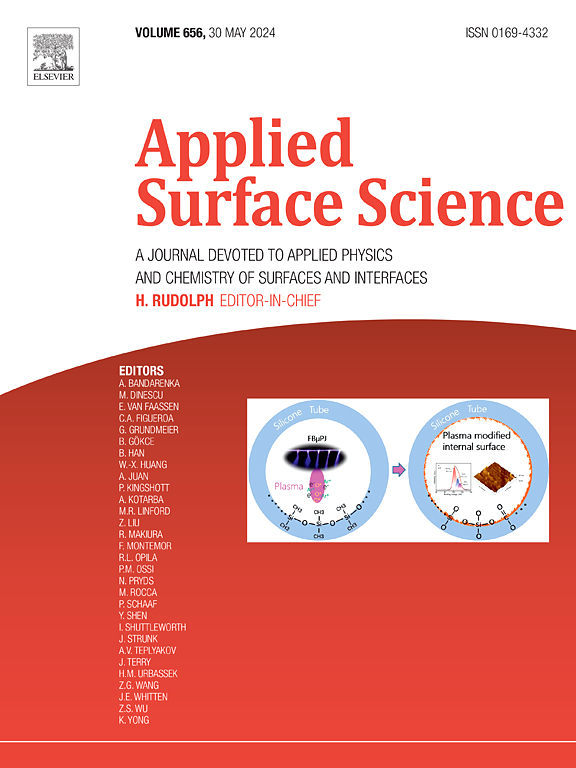通过热处理提高锌铝镁合金涂层钢板的蒸汽氧化反应性
IF 6.3
2区 材料科学
Q2 CHEMISTRY, PHYSICAL
引用次数: 0
摘要
锌铝镁合金涂层钢板因其优异的耐腐蚀性和力学性能而广泛应用于各个行业。为了进一步提高其表面性能,蒸汽氧化处理作为一种环保的表面发黑和提高耐腐蚀性的方法最近受到了关注。然而,由于Zn-Al-Mg涂层的微观结构不均匀,形成均匀致密的氧化层仍然是一个挑战。本研究探讨了热处理作为提高蒸汽氧化反应性的预处理策略的效果。在300 °C下热处理10 min,然后在140 °C下蒸汽氧化1 h,诱导MgZn2相变为更热力学稳定的Mg2Zn11,从而增强了表面反应活性。这种转变降低了接触角,改善了润湿性,提高了氧化速率,促进了更厚更均匀的氧化层的形成。改善的润湿性和增加的反应位点有助于更有效的氧化过程。这些发现强调了预处理策略在优化蒸汽氧化中的重要性,并为增强Zn-Al-Mg合金涂层上保护性氧化层的形成提供了见解。本文章由计算机程序翻译,如有差异,请以英文原文为准。


Enhancing the steam oxidation reactivity of Zn-Al-Mg alloy-coated steel sheets through heat treatment
Zn-Al-Mg alloy-coated steel sheets are widely used in various industries due to their superior corrosion resistance and mechanical properties. To further enhance their surface properties, steam oxidation treatment has recently gained attention as an eco-friendly method for surface blackening and improving corrosion resistance. However, forming a uniform and dense oxide layer remains challenging due to the heterogeneous microstructure of Zn-Al-Mg coatings. This study investigates the effect of heat treatment as a pre-treatment strategy to improve steam oxidation reactivity. Heat treatment at 300 °C for 10 min, followed by steam oxidation at 140 °C for 1 h, induced a phase transformation from MgZn2 to the more thermodynamically stable Mg2Zn11, thereby enhancing surface reactivity. The transformation decreased the contact angle, improving wettability, and increased the oxidation rate, promoting the formation of a thicker and more uniform oxide layer. The improved wettability and increased reaction sites contributed to a more efficient oxidation process. These findings underscore the importance of pre-treatment strategies in optimizing steam oxidation and provide insights into enhancing protective oxide layer formation on Zn-Al-Mg alloy coatings.
求助全文
通过发布文献求助,成功后即可免费获取论文全文。
去求助
来源期刊

Applied Surface Science
工程技术-材料科学:膜
CiteScore
12.50
自引率
7.50%
发文量
3393
审稿时长
67 days
期刊介绍:
Applied Surface Science covers topics contributing to a better understanding of surfaces, interfaces, nanostructures and their applications. The journal is concerned with scientific research on the atomic and molecular level of material properties determined with specific surface analytical techniques and/or computational methods, as well as the processing of such structures.
 求助内容:
求助内容: 应助结果提醒方式:
应助结果提醒方式:


